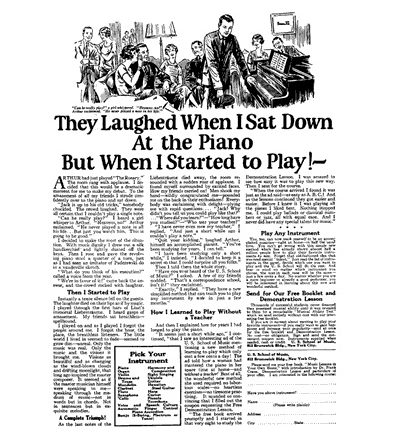Reel ‘Em In: 3 Tips for Writing a Great Headline

Did you know that the average attention span of an internet user is about eight seconds?
With the human brain being an extremely active and thoughtful place, the average internet user’s mind is bound to wander. In fact, their attention span is less than that of a goldfish.
So, in order to keep audiences focused on your blog, article, or any type of web content, it’s essential to reel ‘em in from the very beginning… starting with your headline.
For many people, coming up with the title – or headline – of their piece can be one of the toughest aspects of the writing process. Once the research, outlining, and body paragraphs are done, the cherry on top is a specific, attention-grabbing headline that’ll woo audiences to read.
While keeping internet users hooked for a period of time may seem daunting, there are many tips for writing headlines that can keep your audience engaged from the get-go.
With that being said, here are three of the most essential tips for writing great headlines for your blogs, websites, and other types of web content:
1. Be specific
As you craft your headline, it’s important to be as specific as possible. After all, if your title is broad or vague, audiences may lose interest right from the beginning.
Hone in on the main points of your website content straightaway: what benefits the readers will get from engaging, what problem you’re helping to solve, and or what bit of knowledge you’re trying to share.
The more specific you get, the more likely readers will continue to read, as they understand exactly what your content is offering and about.
2. Be creative
Just because your headline must be specific and concise, doesn’t mean that it has to be boring. In fact, snappy, clever, and interesting headlines draw more readers to content.
As you craft your headline, think about fun plays on words, clever sayings, or interesting lingo you can incorporate into the title.
You can even use colons (:) to add more dimension and interest to your headline. Not only will this add some fun to your content, but it will also set the tone for your entire piece.

However, it’s important to note that your headline ideally shouldn’t exceed 11 words and 65 characters. The reason for this is that shorter titles appear better on search browsers, and are sure to keep that short attention span engaged.
Find a way to be creative, but also practical with the words you use in your headline.
3. Focus on your audience
Moreover, as you write your headline, it’s important to remember who you’re writing for in the first place: your audience. This will inform the style you’re writing in, the content you’re promoting, and even the type of website you’re writing for.
For example, you wouldn’t be writing in the same style for an academic journal as you would a pop-culture/fashion magazine, or even a personal blog, right? For this reason, it’s essential to identify your audience and cater your headline to them.
While writing headlines can be either a pain point or an afterthought in the writing process for some people, it should be taken very seriously. That’s because headlines can make-or-break the success of your content when it comes to keeping an audience engaged.
Besides those three essential tips, and to streamline the process of writing great headlines, there are practical do’s and don’ts you should also adhere to for successful headlines:
Do’s and Don’ts to Craft the Perfect Headline – Infographic
Check out the infographic below from the folks at Websitesetup.org to learn the do’s and don’ts of perfect headlines, along with a few examples of successful headline formulas:





















